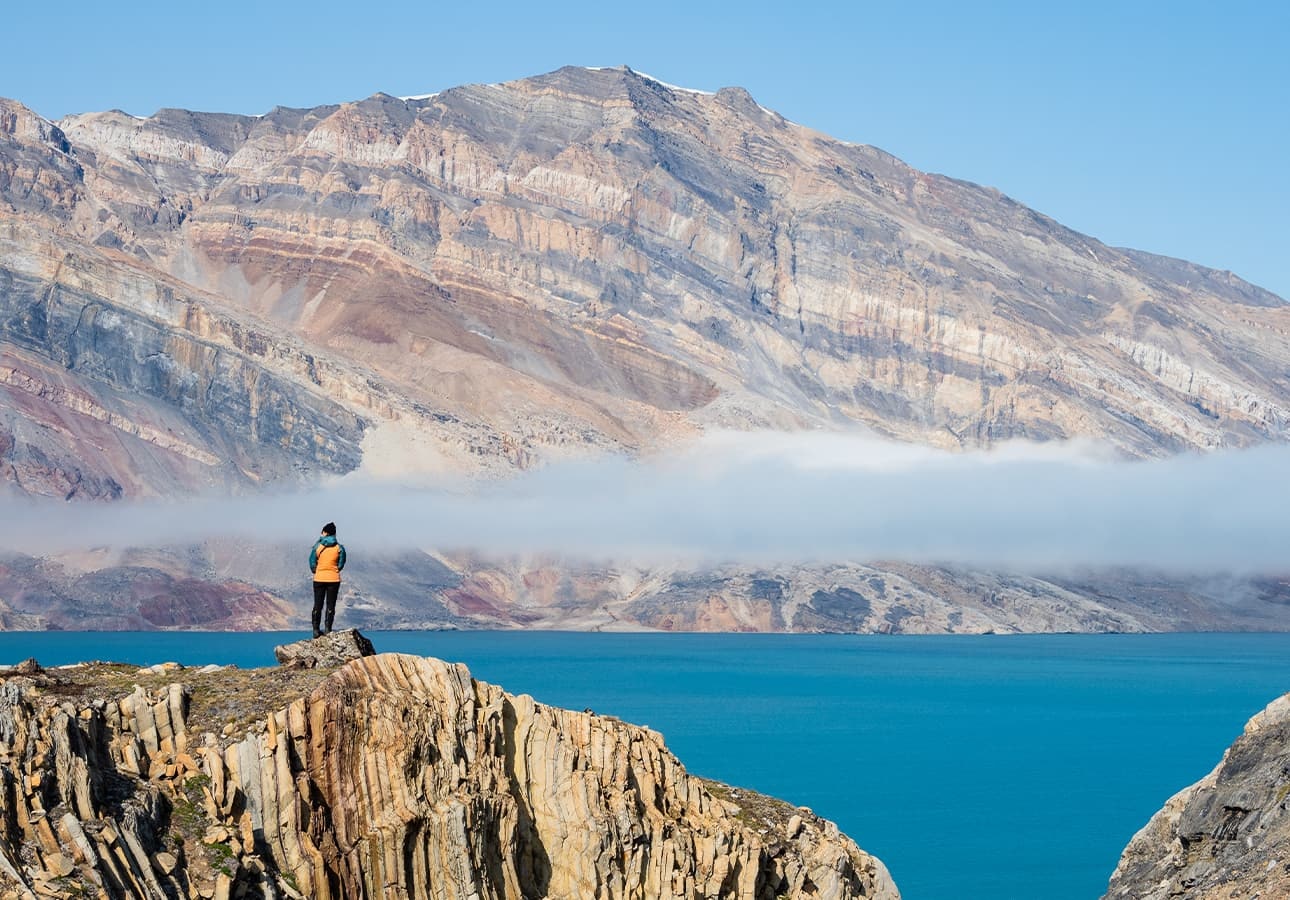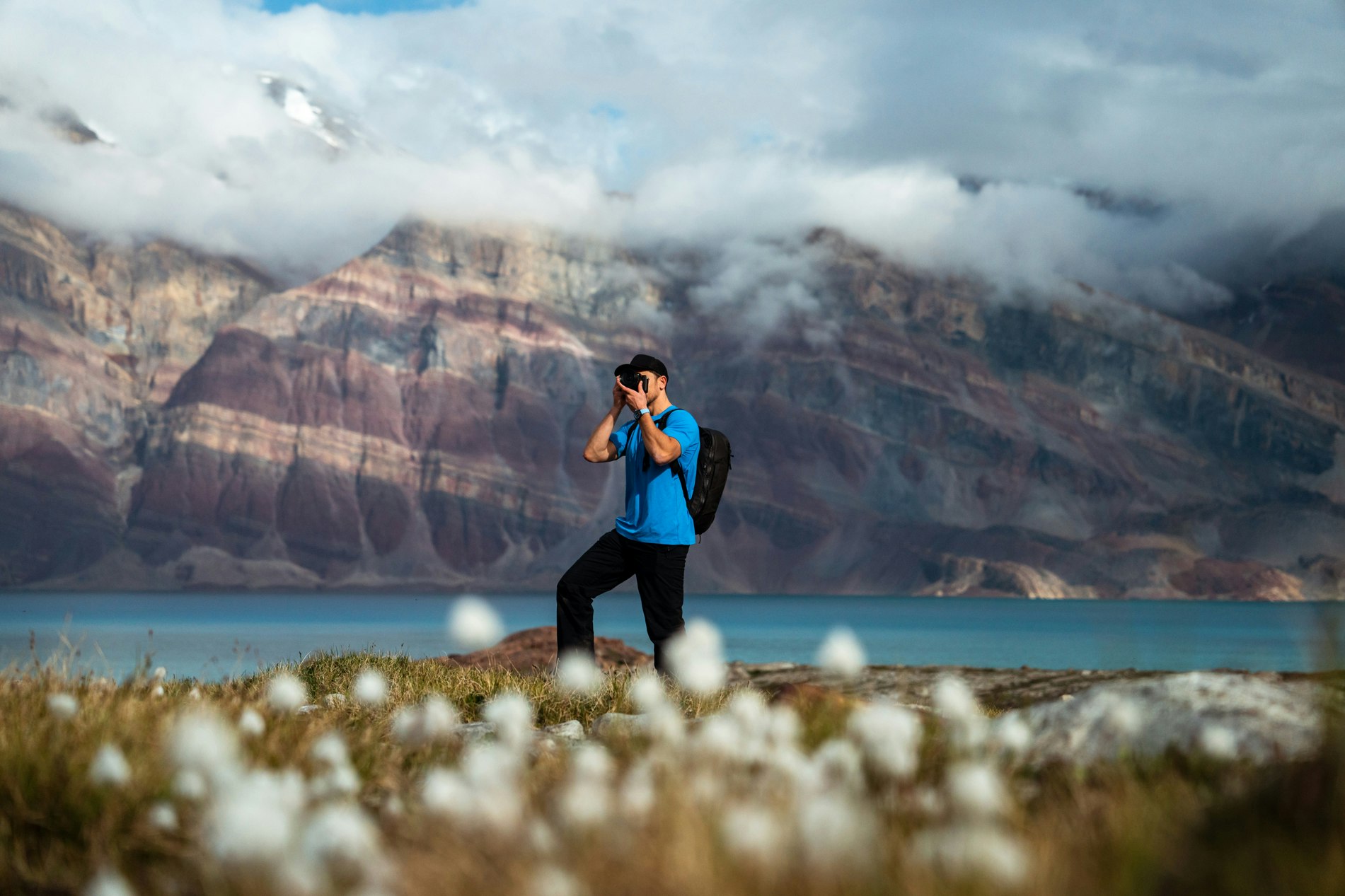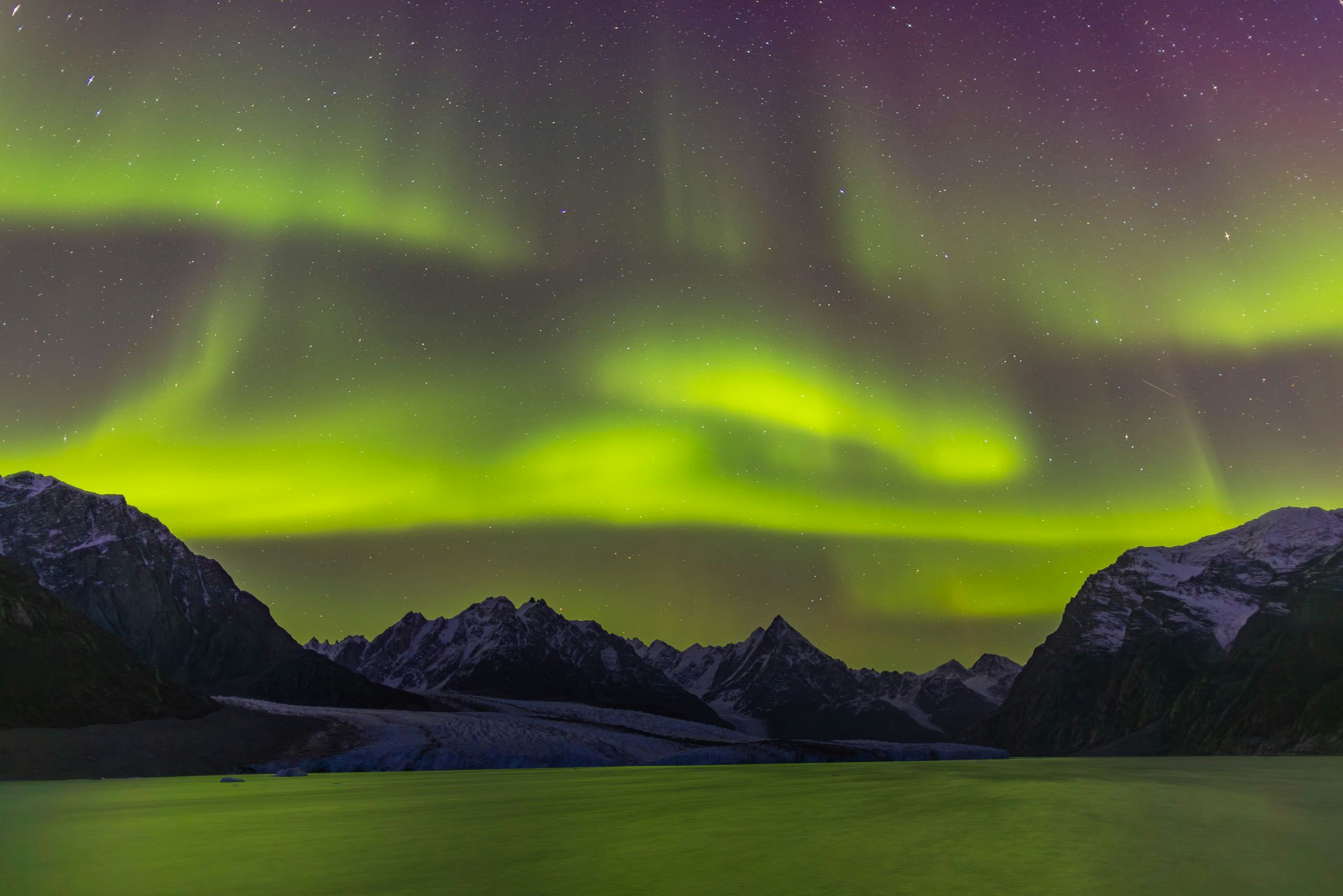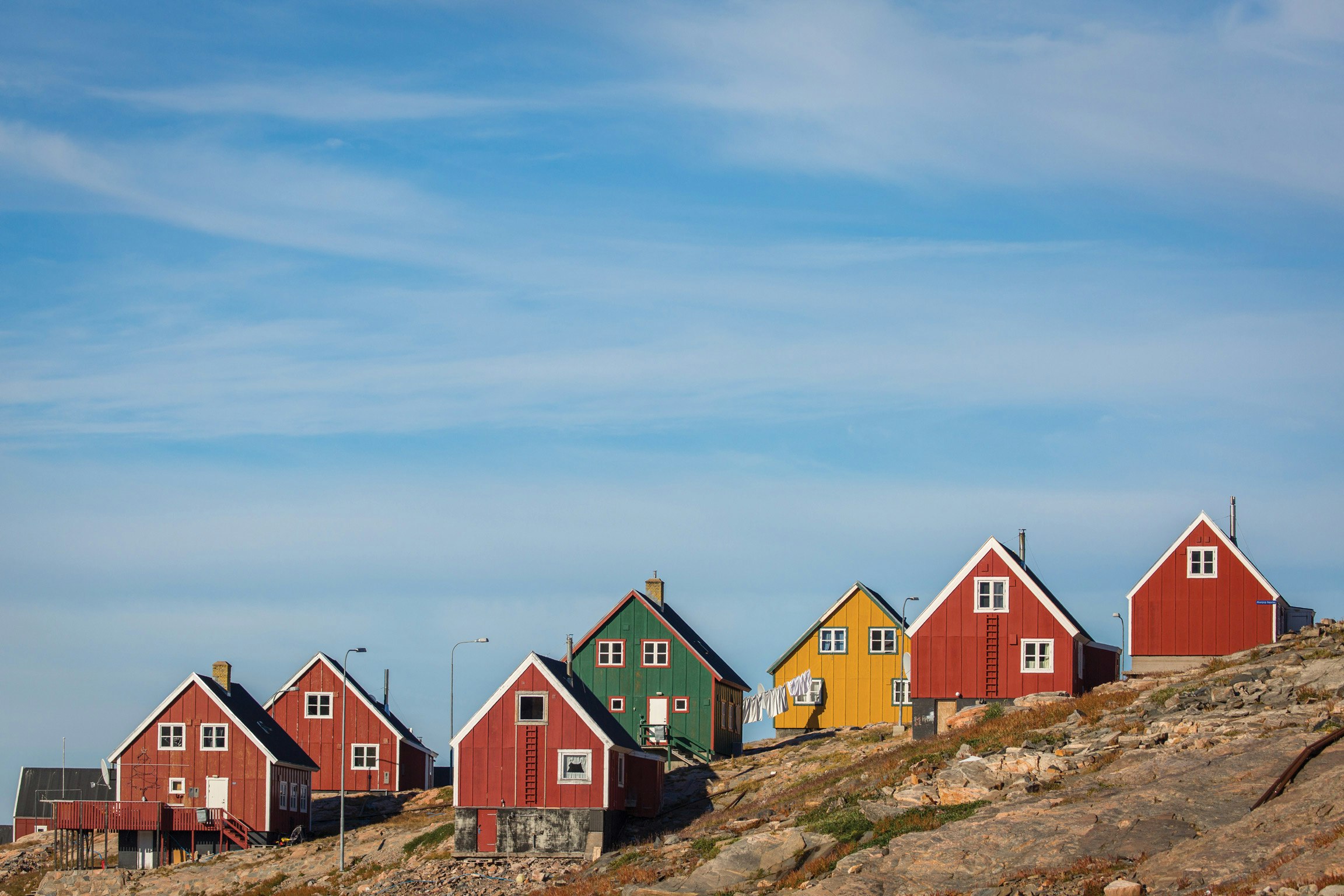Embark on a cruise adventure to the remote coastal regions of Greenland, where you will experience a pristine natural environment that is uniquely Arctic.
.jpg?language=en&auto=format&w={width}&fit=fillmax)
Iceland & East Greenland - Under the Northern Lights
Iceland & East Greenland: Through the Lens
Why Join a Greenland Expedition Cruise?
A Greenland tour will take you to one of the planet’s last great wildernesses, a remote land of ice and snow. Offering remarkable landscapes, exceptional wildlife, iceberg-filled fjords, majestic peaks, vast tundra, Viking history and contemporary Inuit culture, Greenland is truly unlike anywhere else in the world.
Wildlife Encounters
Breathtaking Landscapes
Experience the breathtaking enormity of Greenland where jagged peaks pierce azure skies, and countless glaciers snake their way towards the coast. A trip to Greenland takes you to one of the planet’s last great wildernesses, a remote land of ice and snow. Offering remarkable landscapes from Scoresbysund, the world's largest and deepest multi-branched fjord system, to Ilulissat Icefjord, home to the biggest glacier and ice stream outside Antarctica.
Offering remarkable landscapes, exceptional wildlife, iceberg-filled fjords, majestic peaks and vast tundra. The fjords and mountains of Greenland are where life is concentrated. Summer is the best time to visit Greenland – when wildflowers are in full bloom, birds start breeding and wildlife sightings are most common.
History & Culture
Greenland is a nation with layers of culture and history that will unfold before you. With one of the world’s smallest populations, with approximately 56,500 inhabitants, today, 88% of Greenland’s population is Inuit (predominantly Kalaallit) or a mix of Danish and Inuit.
Since their arrival, the Inuit have thrived across the Arctic tundra and seas. Their very survival depended on their deep connection to the land and the fauna they shared it with. This is evident from their early dress, when animal hides and skin kept them warm against brutal temperatures. European beads and fabrics influenced the now vibrant national costume, worn on special occasions. On select Greenland expeditions, we will have Inuit ambassadors onboard to enhance your experience of this mesmerising world steeped in rich history and fascinating traditional culture.
Greenland Cruises FAQ's
Travellers visiting Greenland should consider several health factors. Consult with a healthcare professional before the expedition to ensure vaccinations are up-to-date. Cold temperatures and potential exposure require appropriate clothing and gear.
Travel insurance covering medical evacuation is advisable. Aurora Expeditions prioritises passenger safety and their experienced team guides health and safety measures. It’s crucial to disclose any medical conditions to the expedition staff for proper assistance. Ultimately, thorough preparation and adherence to recommended health guidelines contribute to a safe and enjoyable journey to Greenland.
Depending on your chosen voyage, there are several starting points for our Greenland expeditions, including Norway, Iceland and Canada. Be sure to check each specific expedition for more information.
The duration of a cruise to Greenland with Aurora Expeditions varies depending on the specific itinerary chosen. Expeditions to Greenland typically range from 13 to 17 days, allowing travellers to immerse themselves in the breathtaking landscapes and diverse wildlife of the region. Our itineraries are carefully crafted to include highlights such as fjords, glaciers and cultural sites, ensuring a comprehensive exploration of this enchanting Arctic destination. For precise information on the duration of a specific cruise, we recommend that you refer to our detailed itineraries on our official website or contact our friendly team directly.
The cost of a cruise to Greenland with Aurora Expeditions varies based on factors such as the duration of the expedition, the type of stateroom chosen and the specific itinerary. Prices generally start from US $17,595 per person – please check our expeditions listed above for more pricing information. Each expedition includes various inclusions like meals, excursions and expert guides, adding value to the overall experience. Plan and explore our expeditions to find a cruise that suits your preferences and budget.
A Greenland cruise with Aurora Expeditions features Arctic landscapes, colossal glaciers and vibrant wildlife that offers a once-in-a-lifetime experience. These expeditions provide opportunities for close encounters with polar bears, whales and other unique species. Aurora Expeditions ensures expert guides, immersive cultural experiences and comfortable accommodations on ice-strengthened vessels. The carefully crafted itineraries showcase Greenland’s awe-inspiring beauty, including fjords and historical sites. Whether you’re a nature enthusiast, adventure seeker, or cultural explorer, a Greenland cruise promises an unforgettable journey, making it a truly worthwhile and enriching expedition into one of the world’s most pristine and captivating destinations.
For a Greenland cruise with Aurora Expeditions, packing essentials include layered clothing for varying temperatures, waterproof outerwear, sturdy and comfortable walking shoes, gloves and a hat. Remember essentials like sunglasses, sunscreen and a camera for capturing the stunning Arctic landscapes. Packing formal wear for onboard events and bringing binoculars for wildlife observation is also advisable.
Check our guide here on what to pack for a trip to the polar regions. Aurora Expeditions also provides a detailed packing list for each specific voyage, so it’s recommended to check their guidelines. Packing adaptable clothing for the dynamic weather conditions ensures a comfortable and enjoyable experience while exploring Greenland’s unique and remote environments.
The optimal time for a Greenland cruise or expedition is during the Arctic summer, generally from June to August. This period offers milder temperatures, wildlife activity and optimal conditions for exploring Greenland’s stunning landscapes. The midnight sun ensures extended daylight hours, enhancing the overall experience. While each month has its unique charm, early summer may provide access to more ice-covered areas, while late summer showcases vibrant flora. Aurora Expeditions carefully plans its itineraries to align with the best seasonal conditions, offering an unforgettable adventure during the warmer months when Greenland’s beauty is in full bloom.




-WEB.jpg?language=en&auto=format&w=500&fit=fillmax)

,-Alpefjord,-Greenland,-Adrian-Wlodarczyk.jpg?language=en&auto=format&w=500&fit=fillmax)


,-Alpefjord,-Greenland,-Adrian-Wlodarczyk-1.jpg?language=en&auto=format&w=500&fit=fillmax)








.jpg?language=en&auto=format&w=500&fit=fillmax)










